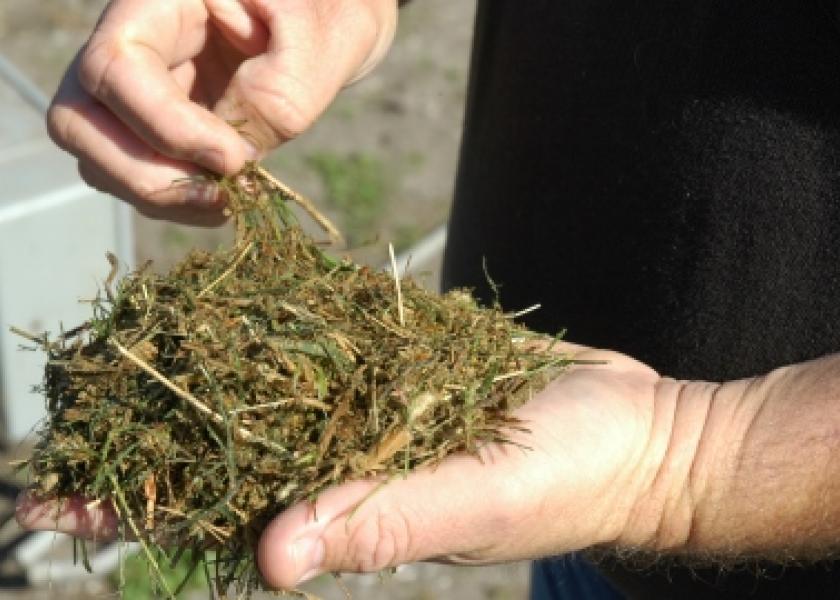Forage Outlook: Mother Nature Holds All the Cards

There are a number of challenges facing forage growers this year, whether you are growing grass for grazing or growing forage to bale as hay. Along with those challenges are opportunities for forage production, mainly due to tighter supplies and growing global demand for all commodities, which has translated into higher prices for corn as well as soybeans, cotton, cattle and hay.
“Tight supplies and an improving economy will likely increase demand for hay,” says Curt Lacy, University of Georgia livestock economist. “However, higher input prices could increase costs enough to lower profi ts. Producers need to start thinking in terms of risk management and not just income minus expenses.”
Given the growing drought in the Mother Nature holds all the cards for summer pastures southern U.S., livestock producers should expect to see increased competition for quality hay, which will further boost prices. Another challenge, and potential opportunity, for hay growers is the movement by some farmers to take land that was once used for grazing or forage production and plow it up to plant crops. Granted, most rangeland will stay in grazing since it is not able to support and sustain crop production, but those “improved” pastures may turn into corn fields if corn prices continue to rise.
If you look at I-35, which runs north and south through the U.S., any pastures on the east side will be in competition with crops, says Oklahoma State University Extension economist Derrell Peel.
Everything depends on the weather. While there are opportunities for forage, a major part of the equation is out of your control: the weather. The National Oceanic and Atmospheric Administration (NOAA) says its precipitation outlook through June is for normal precipitation throughout most of the U.S. If you live in the Southern part of the U.S., there’s a dark cloud looming, and unfortunately it’s not a rain cloud. NOAA predicts that the Southern part of the country will have below-normal precipitation and above-normal temperatures.
“A high-pressure ridge over much of the south central U.S. has pushed the jet stream farther north, so we are not getting much rain in Texas,” says John Nielsen- Gammon, a Texas A&M University atmospheric scientist. “California, on the other hand, has had plenty of rain this spring, but that’s on the wrong side of the Continental Divide to help us.”
In the Northwestern states of Washington, Idaho and Montana, expect below-normal temperatures and average precipitation. The cooler weather could affect hay yields and the number of cuttings in those areas.
Already hurting grazing. The longer-term outlook doesn’t suggest a change in weather patterns anytime soon. The latest seasonal drought outlook (see map) shows that major cow–calf and stocker areas will be dry this spring going into summer as drought conditions creep northward. According to USDA’s Livestock, Dairy, and Poultry Outlook, dry conditions in late March
were already affecting the number of stocker cattle on wheat. In fact, those cattle were moving into feedyards earlier than expected.
“We’re already seeing some forced movement of cattle into feedyards,” says CattleFax analyst Kevin Good. These higher placements are not what the industry expected given the high cost of feed. Most producers hoped that cattle could gain as much as possible on grass before going into the yards, where cost of gain is much higher. Until the weather pattern changes from La Niña to an El Niño, expect current conditions to persist. In the meantime, expect even higher prices for hay and pastures. BT







